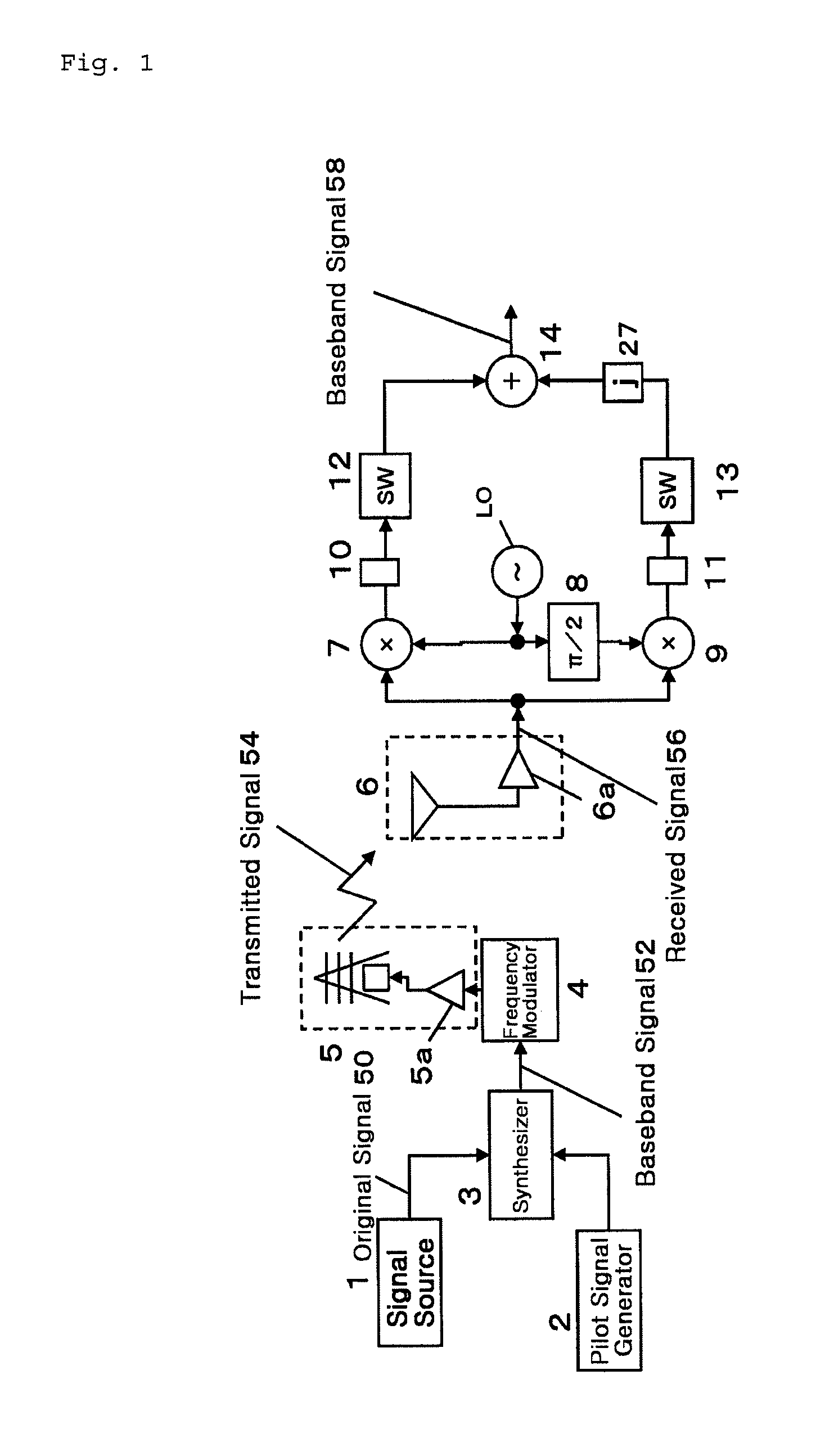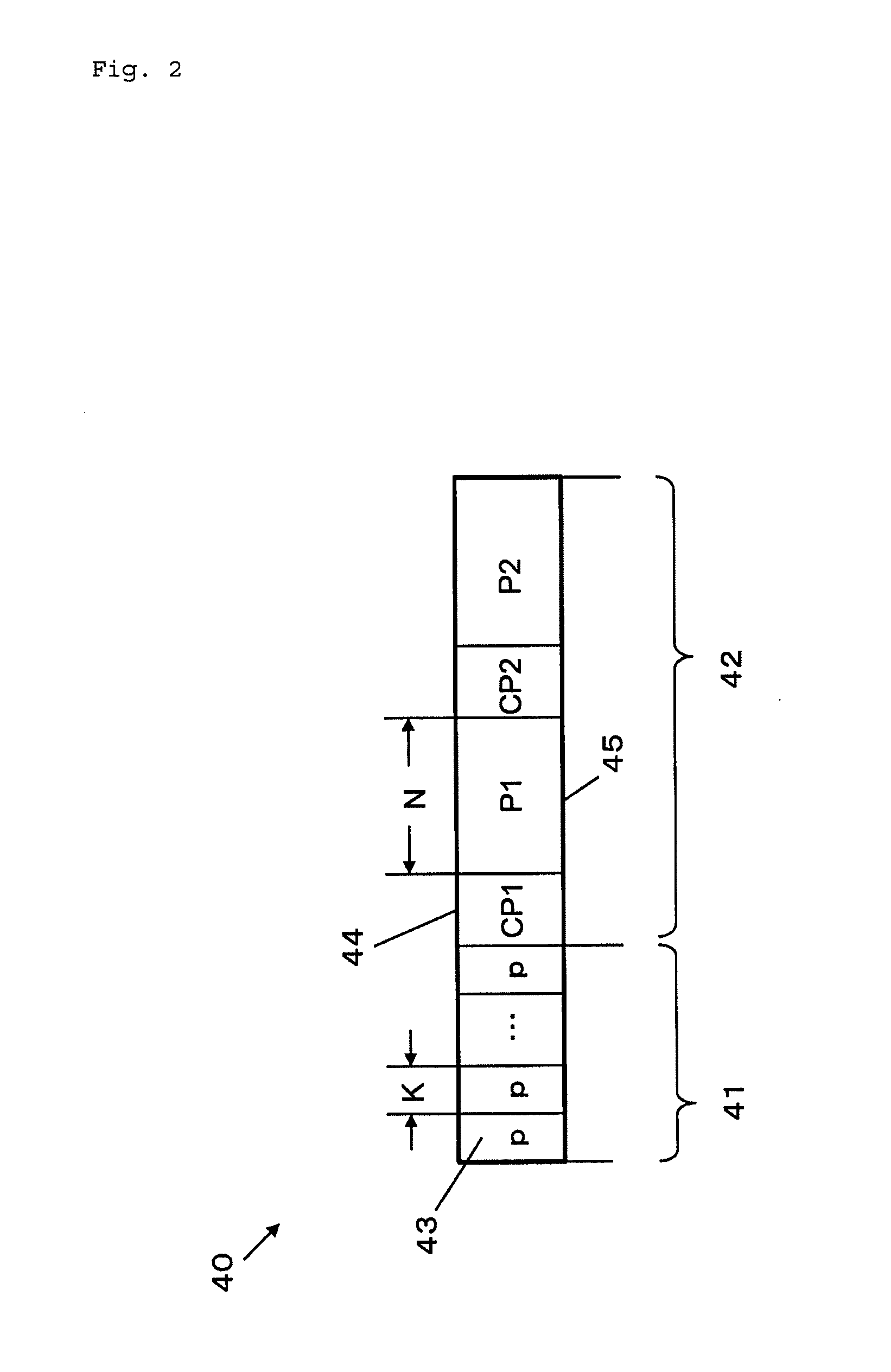Method for determining hybrid domain compensation parameters for analog loss in OFDM communication systems and compensating for the same
- Summary
- Abstract
- Description
- Claims
- Application Information
AI Technical Summary
Benefits of technology
Problems solved by technology
Method used
Image
Examples
first embodiment
[0084]The present invention provides a method for compensating for the loss that an OFDM scheme signal may have when transmitted or received. In this specification, a description will be first made to the outline of a transmit / receive system and the loss that is to be compensated for according to the present invention. After that, the specification will illustrate as to how the receiver compensates for the loss. The compensation requires several compensation parameters. A description will also be made as to how to determine these parameters and how to operate on actual signals, with the OFDM signals mathematically represented. Finally, the differences between the compensation method of the present invention and the conventional compensation method will be shown by simulation.
[0085]FIG. 1 is a schematic view of a transmit / receive system to be compensated according to the present invention. The descriptions below will be directed mainly to a case where the OFDM scheme is used. However...
second embodiment
[0202]FIG. 6 shows such an arrangement in which when the CFO is not zero, the receiver side RIQI and DCO, and the CFO are compensated for by disposing a delay filter on the I axis side and a (2L+1)-stage filter (matrix u) on the Q axis side. However, even when the compensations on the I axis and the Q axis are exchanged, the RIQI, DCO, and CFO can be compensated for.
[0203]FIG. 8 illustrates the configuration of the time domain compensation section 20 to perform that compensation method. The L-stage delay filter 23 is disposed on the Q axis, and the (2L+1)-stage filter u24 is disposed on the I axis. The constant λ is added from the Q axis signal to the I axis signal. In the first embodiment, the contents described in relationship to Equations (50) through (77) are exchanged between the I axis signal and the Q axis signal. However, since the Q axis signal is different in phase from the I axis signal and treated as the imaginary number, the I axis signal and the Q axis signal in the co...
example
[0221]The compensation method of the present invention was simulated to check the effects thereof. The OFDM system used for the simulation is similar to one in accordance with IEEE 802.11a WLAN, employing a carrier frequency of 5 GHz, B=20 MHz, N=64, and the 16 AQM signaling of NG1=16. The frequency selective fading channel has three paths and an exponential attenuating power profile.
[0222]The CFO is 100 kHz, and the I / Q imbalance scenario is to such that α=0.5 dB, φ=−10 degrees, β=1 dB, and ψ=5 degrees. Note that the other conditions were given as follows.
[Equation 114]
xI=[1, 0.1]T (114)
[Equation 115]
xQ=[1, 0.2]T (115)
[Equation 116]
yI=[1, −0.1]T (116)
[Equation 117]
yQ=[1, 0.1]T (117)
[0223]The transmitted distortion-free signal is normalized to 1, in the case of which the DCO power was set as follows.
[Equation 118]
|d|2ε[0,1] (118)
Furthermore, the signal to noise ratio (SNR) was set to be 1 / σ2 with respect to the signal normalized to 1, while the noise variance was set to be σ2.
[...
PUM
 Login to View More
Login to View More Abstract
Description
Claims
Application Information
 Login to View More
Login to View More - R&D
- Intellectual Property
- Life Sciences
- Materials
- Tech Scout
- Unparalleled Data Quality
- Higher Quality Content
- 60% Fewer Hallucinations
Browse by: Latest US Patents, China's latest patents, Technical Efficacy Thesaurus, Application Domain, Technology Topic, Popular Technical Reports.
© 2025 PatSnap. All rights reserved.Legal|Privacy policy|Modern Slavery Act Transparency Statement|Sitemap|About US| Contact US: help@patsnap.com



